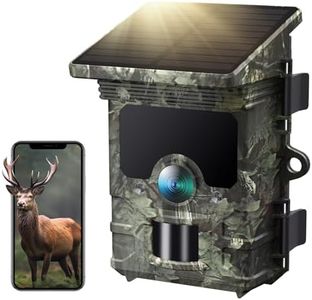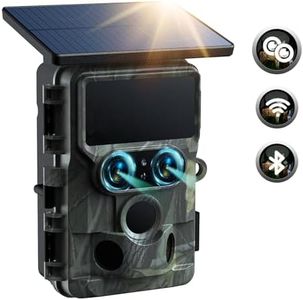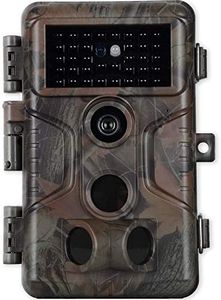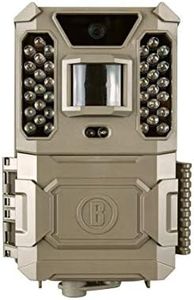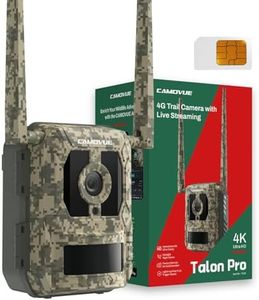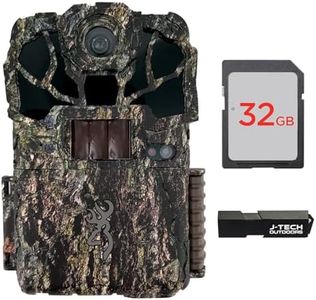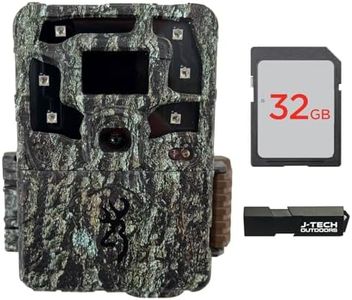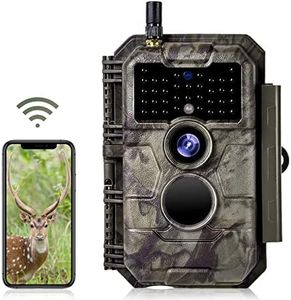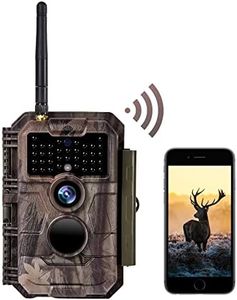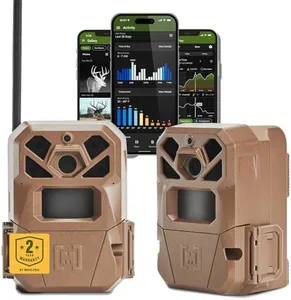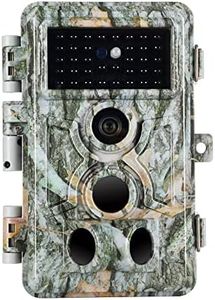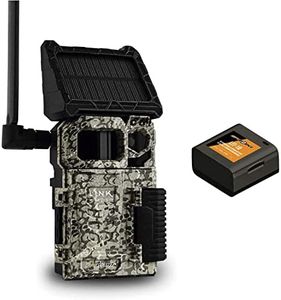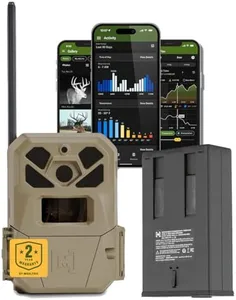We Use CookiesWe use cookies to enhance the security, performance,
functionality and for analytical and promotional activities. By continuing to browse this site you
are agreeing to our privacy policy
10 Best Trail Cameras
From leading brands and best sellers available on the web.By clicking on a link to a third party's website, log data is shared with that third party.
Buying Guide for the Best Trail Cameras
Choosing the right trail camera is all about understanding where and how you plan to use it. Since trail cameras are often left outdoors for long periods, you'll want one that suits the conditions of your area and meets your needs, whether it's wildlife observation, security, or hunting. Focus on core features that determine how well the camera captures activity and how easy it will be for you to access and use the photos or videos afterward.Image ResolutionImage resolution refers to the number of megapixels the trail camera can capture in a photo. Higher megapixels mean sharper and more detailed images, which is important if you want to clearly identify animals or intruders. Trail cameras come in a range of resolutions, starting from under 8MP for basic monitoring, up to 20MP or more for high-detail shots. For general wildlife tracking, mid-range resolution (10–16MP) often provides a good balance between file size and clarity. If you need clear close-ups or plan to print photos, opt for higher resolution. For simple motion detection or basic monitoring, smaller resolutions will be sufficient and use less storage.
Detection RangeDetection range is the distance at which the camera's sensor can detect movement and trigger a photo or video. This is important because it determines how much of an area you can monitor. Shorter ranges (under 50 feet) work well for small clearings or feeders, while longer ranges (60–100 feet or more) are better for open fields or wider observation. Choose the detection range based on the area you want to cover: larger spaces require a longer detection range, while for tight spots a shorter range is often enough.
Trigger SpeedTrigger speed is how quickly the camera takes a photo after detecting motion. A fast trigger speed means you'll catch quick-moving animals or people before they pass out of view. Slow trigger speeds may result in empty shots or missing the subject. Trail cameras generally range from one second down to fractions of a second. If you expect fast-moving subjects (like deer or trespassers), look for a camera with a trigger speed under 0.5 seconds. For slower or predictable activity, a slower speed is acceptable.
Flash TypeTrail cameras use flash to illuminate scenes at night. They commonly use infrared (low-glow or no-glow) or white flash. Infrared is ideal for wildlife because it doesn't disturb animals and is less likely to be noticed by people. No-glow is almost invisible, while low-glow emits a faint light. White flash produces color nighttime photos but can scare animals or make the camera more visible to others. If stealth is your priority, choose infrared—no-glow for maximum concealment. For color images at night, opt for white flash, keeping visibility in mind.
Battery LifeBattery life shows how long the camera can operate before needing new batteries. This is crucial for hassle-free use, especially in remote locations. Battery life depends on the camera's design, the number of photos/videos taken, and features like flash and wireless connectivity. Some cameras last weeks, others several months. If you plan to check the camera infrequently or use it far from home, prioritize longer battery life. For easily accessible areas where you can swap batteries often, shorter battery life may be acceptable.
StorageTrail cameras store images and videos on memory cards, usually SD cards. The storage capacity determines how many photos or videos the camera can keep before you need to empty it. Cameras support different maximum card sizes, often from 32GB to over 128GB. Larger cards are important if you record long videos or are away for long periods. For regular check-ins or basic photo use, smaller cards will be enough. Always choose storage size based on how often you plan to retrieve footage and the type of media you wish to capture.
Weather ResistanceSince trail cameras are used outdoors, their ability to withstand weather is essential. Weather resistance is about the camera's protection against rain, dust, cold, and heat. Cameras are rated for environmental toughness to different degrees. If you plan to leave your camera outside in harsh weather or extreme temperatures, pick a model described as weatherproof or with high protection ratings. For mild or covered settings, basic weather resistance will often be enough.
